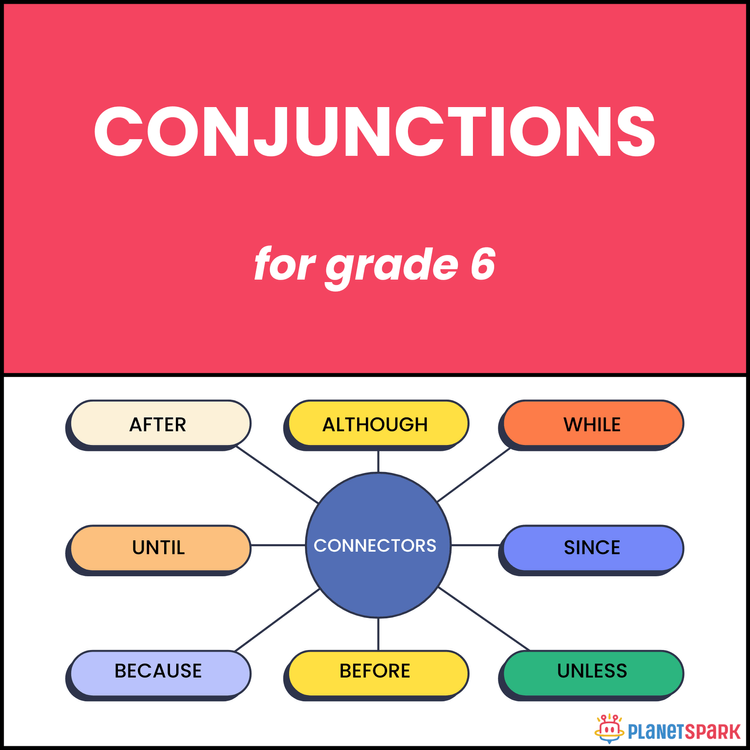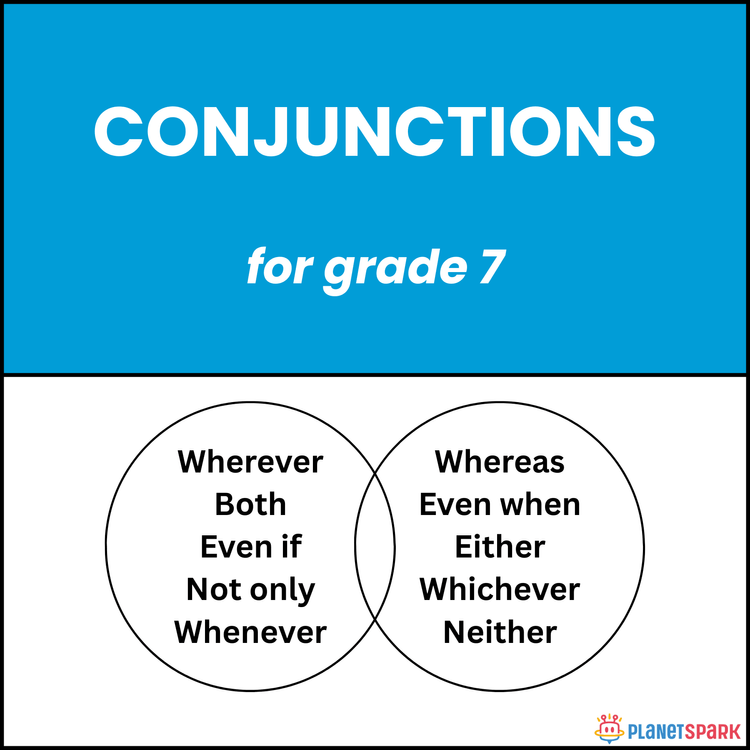Adverbs for Class 7 – Types, Examples & Practice Exercises

Table of Contents
- What is an Adverb?
- Types of Adverbs for Class 7
- Adverbs vs. Adjectives – A Comparative Look for Class 7
- Rules for Using Adverbs
- Placement of Adverbs
- Transforming Adjectives into Adverbs
- Common Errors with Adverbs
- Adverb Exercises for Class 7
- Fun Activities to Learn Adverbs
- Sample Adverb Sentences for Practice
- Why Kids Struggle with Adverbs (and How to Help)
- PlanetSpark’s English Grammar Classes for Kids
- Summary Table of Adverb Types
- Frequently Asked Questions (FAQs)
Understanding adverbs is a vital part of mastering English grammar, especially for Class 7 students. Adverbs are words that modify verbs, adjectives, or other adverbs. They answer questions like how? when? where? and to what extent? In this comprehensive guide, we’ll explore the definition, types, examples, and usage of adverbs. You’ll also get fun practice questions and worksheets to help reinforce your understanding.
What is an Adverb?
An adverb is a word that modifies a verb, an adjective, or another adverb. It tells us more about how an action is performed, when it happened, where it happened, or to what degree.
Examples:
- She quickly finished her homework. (modifies the verb 'finished')
- He is very tall. (modifies the adjective 'tall')
- The car moved too slowly. (modifies the adverb 'slowly')

Types of Adverbs for Class 7
Adverbs can be classified into several types based on the questions they answer. Here are the five most common types:
1. Adverbs of Manner
Definition:
Adverbs of manner describe how an action is performed. They usually answer the question “how?” and often end in -ly.
Examples:
She sings beautifully.
He solved the puzzle quickly.
The baby cried loudly.
Tip: These adverbs are typically placed after the verb or after the object.
2. Adverbs of Time
Definition:
These adverbs tell us when an action happens. They answer the question “when?” and give time-related information.
Examples:
I will finish my homework tomorrow.
We met him yesterday.
She comes here daily.
Common Adverbs of Time:
now, then, soon, later, yesterday, today, tonight, already, recently, always
3. Adverbs of Place
Definition:
Adverbs of place describe where an action happens. They answer the question “where?”
Examples:
The children are playing outside.
Come here.
They searched everywhere for the lost keys.
Common Adverbs of Place:
here, there, outside, inside, above, below, everywhere, nearby
4. Adverbs of Frequency
Definition:
These adverbs explain how often something occurs. They answer the question “how often?”
Examples:
He always eats breakfast.
I sometimes go for a walk in the evening.
She rarely watches TV.
Common Adverbs of Frequency:
always, usually, often, sometimes, rarely, never, occasionally, frequently
Note: These usually come before the main verb but after the verb ‘to be’.
She is always cheerful.
He often visits us.
5. Adverbs of Degree or Quantity
Definition:
These adverbs show how much or to what extent something happens. They modify adjectives, other adverbs, or verbs.
Examples:
She is very tired.
The soup is too hot.
He is almost finished.
Common Adverbs of Degree:
very, quite, too, almost, enough, just, hardly, nearly, extremely
6. Interrogative Adverbs
Definition:
These are question words that are used to ask questions about manner, time, place, reason, or degree.
Examples:
When are you coming?
Why is she crying?
Where did they go?
Common Interrogative Adverbs:
when, where, why, how
7. Relative Adverbs
Definition:
These adverbs connect clauses and refer to a time, place, or reason already mentioned. They act like conjunctions.
Examples:
I remember the day when we met.
This is the place where I was born.
Do you know the reason why he left?
Adverbs vs. Adjectives – A Comparative Look for Class 7
While both adverbs and adjectives are describing words, they describe different parts of a sentence. Understanding how they function in real-world usage helps students choose the correct form while writing or speaking.
Key Differences at a Glance
| Aspect | Adjective | Adverb |
|---|---|---|
| Modifies | Nouns or pronouns | Verbs, adjectives, or other adverbs |
| Example Sentence | She wore a pretty dress. | She danced gracefully. |
| Common Position | Before a noun | After a verb or adjective |
| Form (often ends with…) | No fixed ending (e.g., -y, -ful) | Usually ends with -ly (but not always) |
| Answers Questions Like | What kind? How many? Which one? | How? When? Where? How often? To what extent? |
How to Identify Them in Context
Let’s take similar root words and see how form changes meaning:
Quick vs. Quickly
Adjective: The quick fox jumped over the lazy dog. (Describes the fox)
Adverb: The fox jumped quickly over the lazy dog. (Describes how the fox jumped)
Loud vs. Loudly
Adjective: The loud noise startled the baby. (Describes the noise)
Adverb: He spoke loudly during the presentation. (Describes how he spoke)
Common Confusion in Usage
Sometimes students mix up the two forms, especially when the adjective and adverb forms are similar.
Incorrect:
He runs amazing in the race.
Correct:
He runs amazingly in the race.
Tip: If you’re describing how something is done, you need an adverb.
Test Yourself
Choose the correct form in the sentence:
She looked happy / happily at her results.
✅ Happy (because it describes how she looked, a state, not an action)He explained the answer clear / clearly.
✅ Clearly (describes how he explained)The cake smells delicious / deliciously.
✅ Delicious (it describes the smell, not how it smells)
Why This Matters for Class 7 Students
This distinction is especially important as you begin writing longer essays, descriptive passages, and speeches. Misusing adverbs and adjectives can change the meaning of your sentence or make it grammatically incorrect.
Rules for Using Adverbs
- Most adverbs of manner end in -ly, but not all.
- e.g., happily, slowly, softly
- Some adverbs have the same form as adjectives.
- e.g., fast, hard, early
- Don’t use two adverbs together unless necessary.
- e.g., He spoke very politely. ✅
Placement of Adverbs
Beginning of a sentence:
- Yesterday, we went to the zoo.
Middle of a sentence:
- She always arrives on time.
End of a sentence:
- They played the game cheerfully.
Transforming Adjectives into Adverbs
Many adverbs are formed by adding -ly to adjectives:
- quick → quickly
- happy → happily
- loud → loudly
But some are irregular:
- good → well
- fast → fast (no change)
Common Errors with Adverbs
- ❌ He did good on the test. ✅ He did well on the test.
- ❌ She runs very quick. ✅ She runs very quickly.
- ❌ He spoke loud. ✅ He spoke loudly.
Adverb Exercises for Class 7
Exercise 1: Identify the adverbs in the following sentences.
- She danced gracefully.
- He never lies.
- They waited patiently outside.
- I almost forgot your birthday.
- The baby slept soundly.
Exercise 2: Choose the correct adverb.
- He speaks (loud/loudly) in public.
- I have (never/ever) seen such a beautiful place.
- They arrived (late/lately).
- He is (too/very) smart for his age.
Exercise 3: Fill in the blanks with appropriate adverbs.
- She __________ helped the old lady.
- We will meet __________ at the café.
- He finished the work __________.
- The cat is hiding __________ the couch.
Fun Activities to Learn Adverbs
1. Adverb Charades:
Write action words and adverbs on separate cards. One student picks one card from each pile and acts it out (e.g., “run quickly”).
2. Adverb Hunt:
Pick any short story and ask students to highlight all the adverbs they can find.
3. Adverb Poem:
Ask students to write a short poem using at least five different adverbs.
Sample Adverb Sentences for Practice
- He laughed loudly at the joke.
- They usually eat lunch at noon.
- She looked everywhere for her keys.
- I am too tired to study now.
- He never skips his exercise routine.

Why Kids Struggle with Adverbs (and How to Help)
Many children confuse adverbs with adjectives or misplace them in sentences. Here’s how to help your child overcome these problems:
- Use visuals: Diagrams and tables help simplify complex grammar rules.
- Practice daily: Just five minutes a day of grammar games or worksheets can make a big difference.
- Encourage reading aloud: It helps children notice how adverbs change meaning in spoken language.
PlanetSpark’s English Grammar Classes for Kids
If your child needs extra help with grammar, PlanetSpark offers:
1:1 classes with expert teachers
Personalized learning roadmap
Gamified quizzes and interactive tools
Regular PTMs and progress reports
Access to community debates, writing contests, and podcasting clubs
Book a FREE Trial Class Today and see the difference!
Summary Table of Adverb Types
| Type | Answers Question | Example |
| Adverb of Manner | How? | She danced gracefully. |
| Adverb of Time | When? | He came yesterday. |
| Adverb of Place | Where? | The book is here. |
| Adverb of Frequency | How often? | She always smiles. |
| Adverb of Degree | To what extent? | It is too hot today. |
Help your child master English grammar with structured guidance, fun learning, and expert mentorship only at PlanetSpark!
Frequently Asked Questions (FAQs)
Q1. What is an adverb in simple words?
An adverb describes how, when, where, or to what extent something happens.
Q2. Can an adverb describe an adjective?
Yes. Example: She is very smart. ('very' describes the adjective 'smart')
Q3. Is 'fast' an adjective or adverb?
It can be both. e.g., He runs fast. (adverb) / He is a fast runner. (adjective)
Q4. Are all adverbs ending in -ly?
No. Some adverbs like fast, hard, and well do not end in -ly.
Download Free Worksheets
Personalized Communication Report
Record a video to get a AI generated personalized communication report for your child

Hi There, want to try these
tips for your child with
LIVE with our expert coach?
Let's check your child's
English fluency


